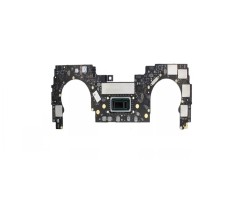What is Supply Chain Management Software Development & How Does It Work?
Discover how Supply Chain Management Software Development streamlines logistics, automates inventory, and enhances efficiency with real-time tracking and data-driven insights.

Supply Chain Management (SCM) software is a digital solution that streamlines, automates, and optimizes the entire supply chain process, from procurement to delivery. It integrates various business operations such as inventory management, logistics, supplier relations, and real-time tracking to ensure a smooth workflow. SCM software enhances visibility, reduces costs, and improves efficiency by leveraging data-driven insights. It typically functions through cloud-based or on-premises systems, offering businesses real-time access to supply chain data, helping them make informed decisions and anticipate market demands.
Must-Have Features of Supply Chain Management Software
1. Managing Purchases
Facilitates seamless procurement by automating purchase orders, vendor communications, and payment tracking. Ensures suppliers meet quality and timeline requirements.
2. Distribution Planning
Optimizes distribution networks by determining the best routes, transportation methods, and warehouse locations to minimize costs and improve efficiency.
3. Advanced Material Management
Monitors raw materials, semi-finished goods, and final products in real-time. Reduces waste and ensures just-in-time (JIT) inventory management.
4. Inventory Management
Keeps track of stock levels, automates restocking alerts, and prevents overstocking or stockouts. Improves inventory accuracy and reduces carrying costs.
5. Warehouse Management
Automates warehouse operations, including picking, packing, and sorting, ensuring optimal storage and retrieval processes.
6. Shipment & Delivery of Goods
Tracks shipments in real-time, provides estimated delivery times, and integrates with third-party logistics providers for seamless transportation.
7. Return Management
Handles product returns efficiently by automating refund or replacement processes and analyzing return reasons to improve product quality.
8. Asset Tracking
Monitors the location and status of physical assets like machinery, vehicles, and equipment, ensuring optimal utilization.
9. Fleet Tracking & Management
Enables real-time monitoring of vehicles, driver performance, and route optimization for cost-effective and timely deliveries.
10. Supplier Relation Management
Improves collaboration with suppliers by streamlining communication, contract management, and performance evaluation.
11. Forecasting
Utilizes predictive analytics to forecast demand, optimize inventory levels, and prevent supply chain disruptions.
12. Order & Invoicing
Automates order processing, invoicing, and payment tracking to reduce errors and improve cash flow management.
13. Fund Flow Management
Ensures seamless financial transactions by tracking expenses, payments, and revenue throughout the supply chain.
14. Assigning User Roles
Grants specific access levels to different users, ensuring data security and role-based accountability.
15. Reports & Analytics
Generates insightful reports on sales, logistics, and operational efficiency, helping businesses make data-driven decisions.
16. Dashboard
Provides a centralized interface displaying real-time data, KPIs, and performance metrics in an easy-to-understand format.
17. Real-Time Notifications
Alerts users on order updates, stock levels, shipment status, and other critical supply chain events.
18. Portal
A self-service platform for suppliers, vendors, and customers to access relevant supply chain data and transactions.
19. Security
Ensures data encryption, access control, and cybersecurity measures to protect sensitive supply chain information.
Steps to Develop Supply Chain Management Software
1. Research and Plan
Understand the specific supply chain needs of the business, analyze existing workflows, and identify gaps that the software will address.
2. Design and Development
Create a user-friendly interface, develop core functionalities, and integrate third-party logistics tools for seamless operations.
3. Testing
Conduct rigorous testing to ensure the software is bug-free, scalable, and meets industry compliance standards.
4. Maintenance
Regular updates, security patches, and feature enhancements keep the software relevant and efficient over time.
Supply Chain Management Software Development Cost
The cost of developing SCM software varies based on factors such as features, complexity, technology stack, and development team location. Here’s an estimate:
-
Basic SCM Software: $30,000 - $70,000
-
Mid-Level SCM Software: $70,000 - $150,000
-
Enterprise-Level SCM Software: $150,000 - $500,000+
Additional costs include maintenance, cloud hosting, API integrations, and security measures.
Top 10 Use Cases of Machine Learning in Transportation and Logistics
1. Last Mile Delivery Optimization
ML algorithms analyze traffic, weather, and delivery constraints to optimize last-mile delivery routes.
2. Warehouse Management
AI-powered automation enhances storage, retrieval, and inventory tracking efficiency.
3. Workforce Planning
Predicts labor demand, optimizes staffing schedules, and enhances productivity.
4. Quality Control
ML-powered image recognition detects defects in products before shipment, reducing returns and wastage.
5. Real-Time Tracking
AI-driven sensors provide real-time location and condition monitoring of shipments.
6. Self-Driving Vehicles
AI-enabled autonomous trucks and drones improve delivery efficiency and reduce human intervention.
7. Supplier Relationship Management
AI analyzes supplier performance data to optimize vendor selection and procurement strategies.
8. Dynamic Pricing
Machine learning adjusts pricing dynamically based on demand fluctuations and competitor analysis.
9. Fleet Management and Optimization
AI-driven analytics optimize fuel consumption, reduce maintenance costs, and improve fleet efficiency.
10. Risk Management and Safety Enhancement
Predictive analytics assess risks in supply chains and suggest preventive measures for disruptions and security threats.
Final Words
Investing in a robust SCM software solution can significantly enhance business efficiency, reduce operational costs, and improve customer satisfaction. Whether you're managing inventory, tracking shipments, or optimizing logistics, a well-developed SCM software is a game-changer. If you're considering building a customized solution, partnering with a logistics software development company can help you create a feature-rich, scalable, and efficient system tailored to your needs.
What's Your Reaction?






















